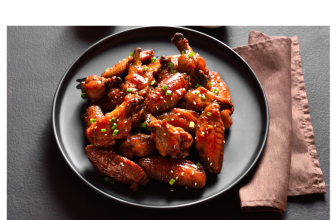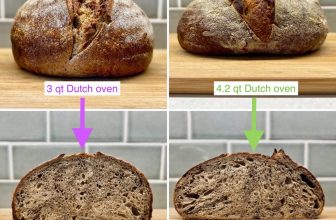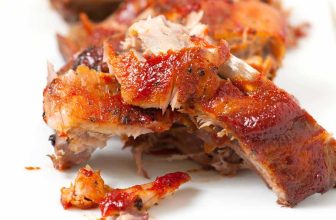Chicken in a Roasting Pan

Chicken in a Roasting Pan is a delicious and easy-to-make dish that is perfect for any occasion. It involves placing a whole chicken in a roasting pan and cooking it until it is tender and juicy.
The chicken can be seasoned with herbs, spices, and other flavorings to enhance its taste. Roasting the chicken in a pan allows the heat to circulate evenly around the bird, ensuring that it cooks evenly and develops a crispy skin.
Whether you are cooking for a family dinner or hosting a dinner party, chicken in a roasting pan is a versatile and crowd-pleasing option that is sure to impress.
The Art Of Roasting Chicken
When roasting chicken, choose a bird that is fresh and of high quality. Ensure the pan you select is appropriate for roasting to achieve the best results.
:max_bytes(150000):strip_icc()/83557-juicy-roast-chicken-mfs495-4x3-b619cb42e7ee434db25dcb0a7e8d057d.jpg)
Prep Work For Perfect Poultry
Start by thoroughly cleaning the chicken and patting it dry. Season the inside and outside generously with salt and pepper. Allow the chicken to sit at room temperature for 30 minutes before roasting.
To Brine Or Not To Brine
Brining chicken before roasting is a personal choice and depends on individual preferences. However, there are some benefits of brining that one should consider.
Brining the chicken helps to keep it moist and tender while cooking. The salt in the brine solution breaks down the protein structure of the meat, allowing it to retain more water and preventing it from drying out during cooking. Brining also adds flavor to the chicken, making it more delicious.
Here are some simple brine recipes that you can try:
| Ingredients | Amount | Instructions |
|---|---|---|
| Water | 1 quart | Boil water and let it cool |
| Salt | 1/4 cup | Dissolve salt in water |
| Sugar | 1/4 cup | Dissolve sugar in water |
| Peppercorns | 1 tablespoon | Add peppercorns to the water |
Another simple recipe includes water, salt, and brown sugar. Mix 1 quart of water with 1/4 cup of salt and 1/4 cup of brown sugar until dissolved. Add the chicken to the brine and refrigerate for at least 2 hours or overnight.
Herbs And Spices For Flavor Enhancement
Enhance your roasted chicken in a pan with a blend of aromatic herbs and spices for a burst of flavor. Elevate your dish with a mix of rosemary, thyme, garlic, and paprika for a delicious culinary experience.
| Classic Herb Combinations | Experimenting with Spices |
| Rosemary, thyme, and sage elevate the chicken flavor. | Try cumin, paprika, or turmeric for a twist. |
Roasting Techniques
Roasting chicken in a roasting pan requires careful attention to temperature and timing. For a moist and tender chicken, start with a high temperature to brown the skin, then reduce the heat for even cooking. Basting the chicken with pan drippings or melted butter helps to keep the meat moist. Keep a close eye on the cooking time to prevent overcooking, and use a meat thermometer to ensure the chicken reaches the proper internal temperature.

The Role Of Vegetables
The role of vegetables is crucial in enhancing the flavor and nutritional value of chicken in a roasting pan. Adding a variety of vegetables such as carrots, onions, and potatoes creates a balanced meal that is both delicious and healthy.
| When preparing chicken in a roasting pan, the vegetables play a crucial role in enhancing the flavor. |
| By creating a bed of flavorful vegetables, you can infuse the chicken with delicious tastes. |
| Choosing complementary veggies like carrots, onions, and potatoes can add depth to the dish. |
Testing For Doneness
When roasting chicken in a pan, ensure it’s done by inserting a meat thermometer into the thickest part of the meat, making sure it reaches 165°F. You can also check for doneness by piercing the chicken and ensuring the juices run clear, not pink.
| Testing for Doneness |
| Using a Meat Thermometer |
| Using a meat thermometer is the most accurate way to test if your chicken is done. Insert the thermometer into the thickest part of the chicken without touching the bone. The temperature should reach 165°F (75°C) for safe consumption. |
| Visual and Tactile Cues |
| Visual and tactile cues can also help in determining the doneness of the chicken. The juices should run clear, not pink, and the meat should feel firm to the touch. If you pierce the chicken and the juices are pink, then it needs to cook for a longer time. |

Resting And Carving
Resting the chicken after roasting is crucial for it to be juicy and tender. This allows the juices to redistribute evenly throughout the meat. To rest the chicken, remove it from the roasting pan and place it on a cutting board. Cover it loosely with foil and let it rest for 10-15 minutes before carving.
When carving the chicken, start by removing the legs and thighs, followed by the wings. Then, carve the breast meat by cutting along the breastbone and slicing the meat thinly against the grain.
| Step-by-Step Carving Guide |
|---|
| 1. Remove legs and thighs. |
| 2. Remove wings. |
| 3. Carve breast meat by cutting along the breastbone and slicing thinly against the grain. |
Serving Suggestions
Enhance your chicken in a roasting pan with creative serving suggestions. Pair it with roasted vegetables or a fresh salad for a wholesome meal experience. Elevate your dining with flavorful sides and garnishes to impress your guests.
| For pairing with sides, consider roasted vegetables or a fresh salad. |
| When plating, garnish with herbs and lemon wedges for a pop of color. |
Storing And Repurposing Leftovers
When storing chicken leftovers, always use airtight containers to prevent contamination. Refrigerate the leftovers within two hours of cooking to keep them safe for consumption. Leftover chicken can be stored in the refrigerator for up to four days. To repurpose the leftovers, consider using them in sandwiches, salads, or soups. You can also shred the chicken and use it in tacos or wraps. Another creative idea is to incorporate the leftover chicken into a flavorful stir-fry or casserole. By following these safe storage tips and creative leftover ideas, you can make the most of your chicken in a roasting pan.
Frequently Asked Questions
Do You Have To Put Water In Roasting Pan When Roasting A Chicken?
No, it is not necessary to put water in the roasting pan when roasting a chicken. The chicken’s natural juices and fats provide enough moisture for cooking.
Is It Better To Roast Chicken At 350 Or 400?
For juicier chicken, roast at 350°F. For crispy skin, go for 400°F. Adjust based on your preference.
Should You Cover A Chicken When Roasting?
Covering a chicken when roasting is a personal preference. Some people cover it to keep it moist, while others prefer an uncovered bird for crispy skin. It’s important to bake the chicken regularly if it’s uncovered to prevent it from drying out.
Ultimately, it’s up to you and your desired outcome.
How Do You Cook With A Roasting Pan?
To cook with a roasting pan, preheat your oven to the desired temperature. Place the meat or vegetables in the pan, add any desired seasonings, and cover with a lid or foil. Roast in the oven for the recommended time, checking occasionally for doneness.
Enjoy your delicious meal!
Conclusion
Cooking chicken in a roasting pan is a simple and delicious way to prepare a flavorful meal. By following the easy steps outlined in this blog post, you can create a mouthwatering dish that will impress your family and friends.
Whether you’re a beginner cook or a seasoned chef, this classic recipe is sure to be a hit.






